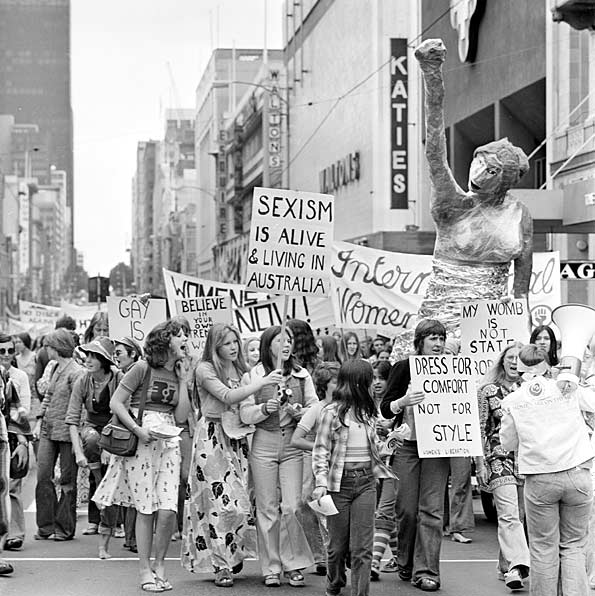Description
This is a black-and-white photograph that shows a group of women and girls marching down a street in Melbourne’s central business district as part of the International Women’s Day rally held on 8 March 1975 during International Women’s Year.
Educational value
- This asset is a record of the International Women's Day march held in Melbourne in 1975 - a crowd estimated at between 3,000 and 5,000 people, mainly women, marched from the city square to the Carlton Gardens to hear speeches and watch performances of women's theatre and music.
- It gives an indication, through the protest banners, of the demands of the women's movement in this period - the demands included equal pay, equality in employment and education, free 24-hour child care, the right for women to control their own bodies, safe contraception, abortion on demand, and an end to both violence against women and discrimination against lesbians.
- It indicates that the women's liberation movement was active in the 1970s - the term 'women's liberation' came from the USA in 1969; in Australia, thousands of women formed women's groups and organisations and, through direct actions such as marches and demonstrations, women vocally demanded change to economic, political and social discrimination.
- It shows an event organised as part of International Women's Year - in order to focus attention on women's rights, the United Nations declared 1975 to be International Women's Year and 1976-1985 to be the UN Decade for Women; in Australia the Whitlam government allocated over $2 million to International Women's Year programs and activities.
- It shows that International Women's Day was celebrated in Australia - International Women's Day grew out of early 20th-century activism by American and European socialist women demanding suffrage and improved working conditions; in 1975 the UN officially recognised 8 March as International Women's Day; the first Australian rally took place in the Sydney Domain on 25 March 1928, but rallies were generally small until the 1970s.
- It provides an example of the type of clothing worn by women in this period - women’s liberation influenced women’s fashion, with women favouring the 'natural look’, long hair and comfortable free-flowing clothes (including bell-bottom jeans); in this photograph a woman holds a placard saying 'dress for comfort not for style’ while another woman wears a T-shirt with the UN’s International Women's Year logo, which combines a dove, representing peace, and a symbol for women.
